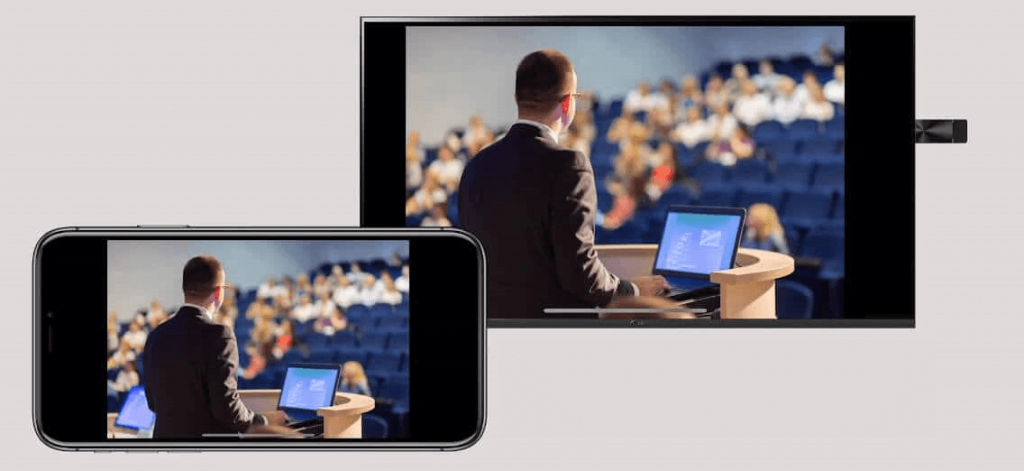Sweat drips down the side of your face as you wait quietly backstage, fidgeting.
Your hands are cold and clammy as you fumble through cue cards one last time, trying to recall key points on each card.
Your name gets called and you face the inevitable walk up the stage to deliver what you imagine can be the worst public humiliation of your life.
We have all been there, the uneasy, nauseating feeling of public speaking.
The one thing we fear more than death, so they say.
Unless you make a living from working remotely, speaking in public is a useful, if not an essential tool for educational and professional success.
Why are effective presentation techniques important?
Effective presentation techniques are important because they help you deliver ideas in clear, concise and interesting ways.
Being a good public speaker allows you to demonstrate your knowledge with authority and help you stand out in the workplace.
Therefore, we need to find effective presentation techniques that work for us to put our best selves forward whenever we speak in public.
With numerous resources on improving public speaking written everywhere, here are the best presentation techniques that you can master.
1. Limit your presentation to one core idea
You have so much knowledge you want to share, educate and persuade.
Why limit your speech to just one idea?
Because ideas are complicated.
It takes a pitch to build interests into a desire, a narrative to create empathy, supporting evidence to be persuasive, and a call to action to lead movements.
Instead of squeezing every ounce of your knowledge into the limited time allocated to your speech, you will be most effective by concentrating on just one core idea that your audience can resonate with.
This way, you can be sure your audience can walk away with a clear message after the presentation.
2. Remember that the audience is on your side
Whether you are delivering a business plan in a boardroom or speaking as a keynote speaker at a conference.
Whether you are speaking to a handful of colleagues, or a lecture theatre packed with college seniors.
The audience is there for one reason.
You.

You may imagine the audience is there to watch you make a fool of yourself, but more often than not, they want to be there, be enlightened by your presence, and be inspired by your talk.
3. Gently introduce people to your accents
With all the ethnic diversity in the world, we can all learn from our differences and work towards a greater good.
Despite speaking the same languages, our diverse backgrounds would lead to little nuances in the way we enunciate words and the way we speak phrases.
Intentionally speaking slowly, in the beginning, is not only good practice but a good technique to allow your audience to get used to your accents.
After all, you need your listeners to understand your words before they can understand your ideas.
4. Use language your audience can understand to deliver your idea
Now that your audience can understand the words coming out of your mouth, we can think about how to deliver your idea.
Unless you are speaking to a family member, your audience likely has a different background to yours.
Both geographically and professionally.
This means, the technical jargon and inside jokes that you throw around among your friends and colleagues may not work in a packed conference room.
It’s best to practice explaining your ideas to friends from different backgrounds to get a feel of how effective your presentation is to the public.
5. Spark curiosity in your audience
Listening is hard.
It’s difficult to concentrate on listening to a new idea, even more so if the idea is boring.
Therefore it is your job, as a speaker, to spark curiosity in your audience to make sure both you and your audience enjoy the presentation.

A few common ways to spark interests include humor, storytelling, anecdotes, or even funny cat videos.
6. Present data visually
Not all people perceive numbers and data in the same way.
A simple statistic can mean different ideas to different people.
The best way to control the narrative in numbers and data is to create visual images that tell specific stories.

An effective image can help your audience understand both the meaning and origin of the data to keep people engaged.
7. Your slides are not the centerpiece, you are
It is tempting to use your slide deck as a crutch, and follow it slide by slide, dividing your attention between the presentation slides and your audience.
You will look like a tennis umpire looking back and forth, back and forth.

The audience is here to see you, to listen to what you have to say.
Try to bring your best presence to deliver your speech and only use the slides for images and videos to drive your point home, not to divert attention away from you.
8. Use technology only if necessary
Following the last point, your presentation slides are only used to support your talk, not to take over it.
Use presentation technology with caution, and only in situations where necessary.

To run your presentation from an iPhone like a pro, there’s always EZCast Pro to help you make wireless presentations in huddle rooms and meeting rooms at work.
9. Practice your presentation over and over again
Now you know all the most effective presentation techniques available, all that’s left for you is to master them through deliberate practice.
Whether you repeat your speech during your daily commute or annunciate key points with purpose in the shower.
Try to memorize your presentation down to every single deliberate pause to make sure you have every detail down pat.
Then you can find a friend or family member to listen to you speak and provide constructive feedback.
Once you iron out the kinks, you will become more effective in presentation and ready for the big time.



在〈9 Effective Presentation Techniques You Can Use to Master Public Speaking6 min read〉中有 3 則留言
Point 3.
I think the write meant to write “enunciate” NOT “annunciate”. These 2 words are very different. The 1st one mean to speak clearly and the 2nd one means to announce.
Thank you for the correction Maurice.
Just changed it to the correct usage.
Really nice topic. It will helps during presentation.